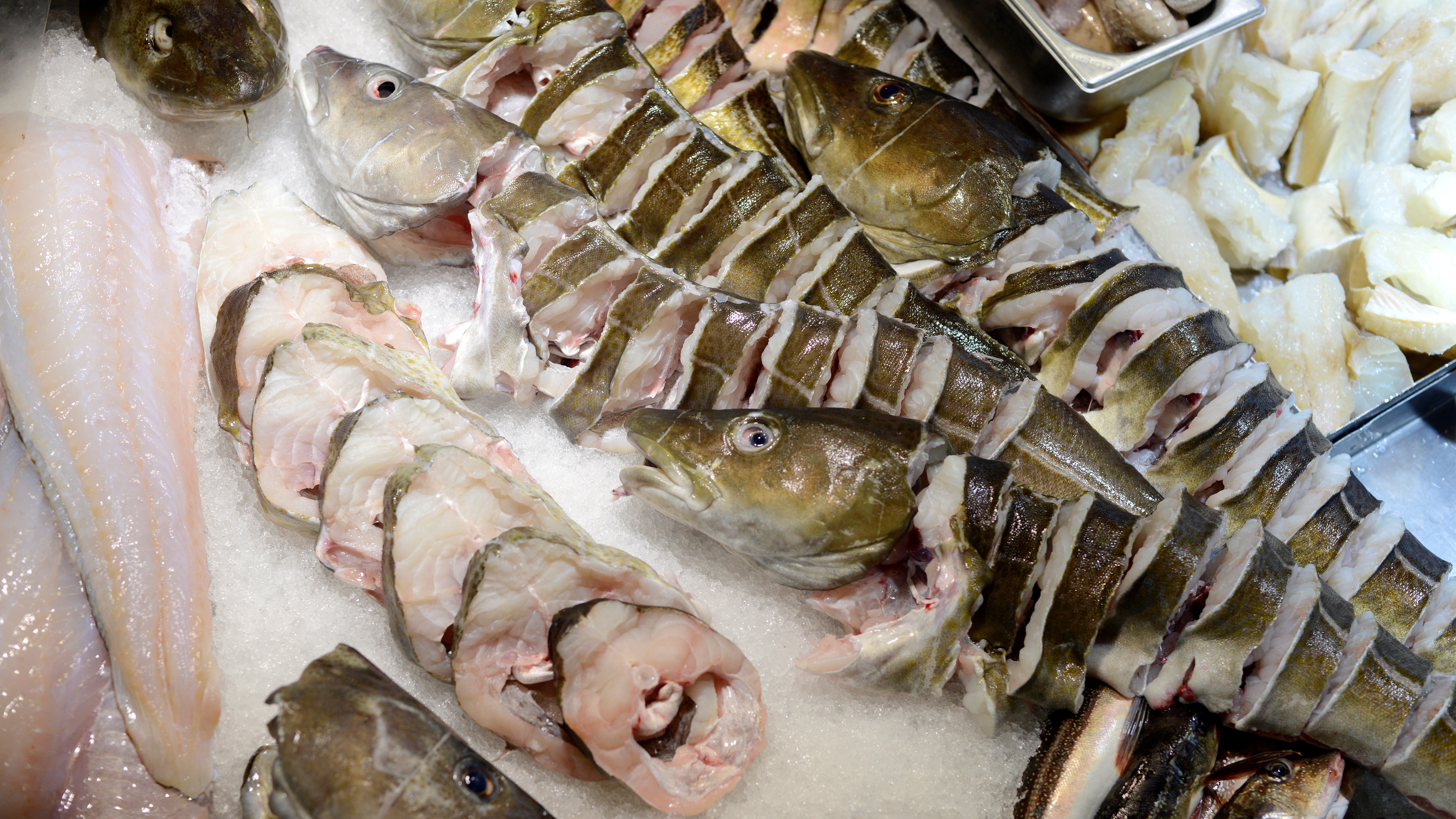Seafood and body weight
According to the Norwegian Institute of Public Health, one in five adults and one in six children in Norway are overweight. This is associated with increased risk of type 2 diabetes and other chronic diseases.
Large epidemiological studies suggest a link between seafood consumption and low body weight. But the mechanisms behind this have not been ascertained.
In various experiments on rodents, scientists have investigated how different types of seafood may reduce the development of obesity and type 2 diabetes. The research indicates that it is probably not just the omega-3 fatty acids that are responsible, but also the proteins in the seafood.
References:
Liaset, B. et. al. “Seafood intake and the development of obesity, insulin resistance, and type 2 diabetes.” Nutrition Research Reviews. In press.2019 Jun;32(1):146-167
Lean fish reduced the weight of mice
In several experiments, mice were fed proteins from different sources. Protein from plants and milk were most effective at preventing weight gain, but protein from seafood was also consistently better for them than protein from meat. This was also true when they were fed high-protein diets.
Researchers are trying to understand the mechanisms behind these differences.
References:
Liisberg, Ulrike, et al. “The protein source determines the potential of high protein diets to attenuate obesity development in C57BL/6J mice.” Adipocyte 5.2 (2016): 196-211.
Holm, Jacob Bak, et al. “Diet-induced obesity, energy metabolism and gut microbiota in C57BL/6J mice fed Western diets based on lean seafood or lean meat mixtures.” The Journal of Nutritional Biochemistry 31 (2016): 127-136.
Lean fish increases satiety
Mice fed protein from a mixture of lean seafood ate less food than mice that were given lean meat.
Similar results have been found for protein from cod in comparison with protein from pork.
Although cod contains much less omega-3 fatty acids than fatty fish such as salmon and mackerel, scientists observed a big increase in omega-3 levels in mice that ate cod.
References
Liisberg, Ulrike, et al. “Intake of a Western diet containing cod instead of pork alters fatty acid composition in tissue phospholipids and attenuates obesity and hepatic lipid accumulation in mice.” The Journal of Nutritional Biochemistry 33 (2016): 119-127.

Metabolic rate increased
Animal protein, particularly lean seafood like scallops, contains a lot of taurine. In one experiment, mice were fed protein with increasing amounts of taurine (chicken, cod, crab and scallops). The more taurine the protein source contained, the less less obesity was observed.
The mice that were fed scallops ate less and their metabolic rate also increased.
Several studies show that mice given proteins from marine sources have a higher metabolic rate than mice that eat meat. They put on less weight in comparison to the number of calories that they eat.
This may be due to more energy being converted into heat in their brown fat. Another possible explanation is that the composition of gut bacteria is changed by eating protein from the sea, resulting in less energy being absorbed by the body.
References:
Tastesen, Hanne Sørup, et al. “Scallop protein with endogenous high taurine and glycine content prevents high-fat, high-sucrose-induced obesity and improves plasma lipid profile in male C57BL/6J mice.” Amino Acids 46.7 (2014): 1659-1671.
Madsen, Lise, et al. “Dietary proteins, brown fat, and adiposity.” Frontiers in Physiology 9 (2018): 1792.
Madsen, Lise, et al. “Links between Dietary Protein Sources, the Gut Microbiota, and Obesity.” Frontiers in Physiology 8 (2017): 1047.
Toxins may play a role in obesity and diabetes
Seafood, particularly fatty fish, contains pollutants like dioxins and dioxin-like PCBs. These fat-soluble pollutants are stored in the fat of humans and mice. Several studies show that overweight humans suffering from diabetes have more pollutants in their bodies than people who are slim and healthy. However, no clear causal relationship has been demonstrated.
The studies involving rodents are also ambiguous. Experiments have shown that rats that eat salmon oil containing pollutants put on more weight than those that eat filtered oil. They also had a higher risk of developing type 2 diabetes.
Mice that ate salmon fed on marine oils put on less weight than mice that ate salmon fed on plant oils. This was in spite of the former group having more pollutants stored in their bodies.
Researchers have also shown that mice fed a fatty diet absorb more pollutants from their food than mice with a lean diet. The differences between these results suggest that the pollutants and nutrients affect one another.
References:
Taylor, Kyla W., et al. “Evaluation of the association between persistent organic pollutants (POPs) and diabetes in epidemiological studies: a national toxicology program workshop review.” Environmental Health Perspectives 121.7 (2013): 774-783.
Ruzzin, Jérôme, et al. “Persistent organic pollutant exposure leads to insulin resistance syndrome.” Environmental Health Perspectives 118.4 (2009): 465-471.
Midtbø, Lisa Kolden, et al. “Intake of farmed Atlantic salmon fed soybean oil increases insulin resistance and hepatic lipid accumulation in mice.” PLOS One 8.1 (2013): e53094.
Myrmel, Lene Secher, et al. “Macronutrient composition determines accumulation of persistent organic pollutants from dietary exposure in adipose tissue of mice.” The Journal of Nutritional Biochemistry 27 (2016): 307-316.
Published: 27.03.2019 Updated: 19.06.2019
